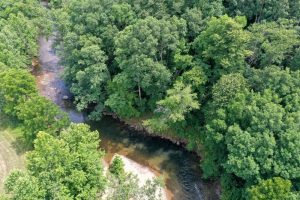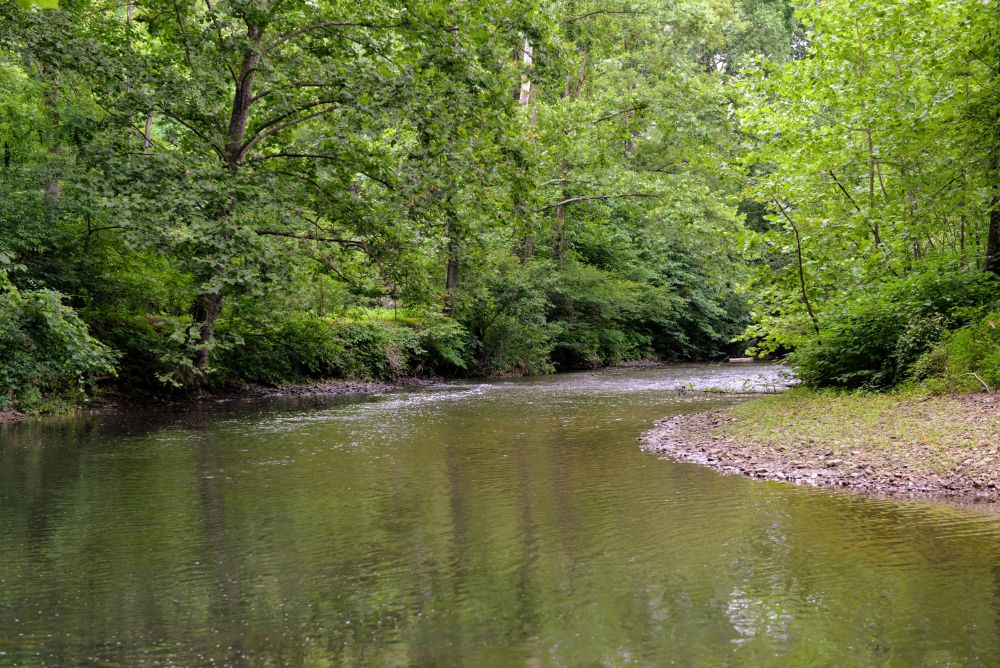River Farm which is located just outside of Alexandria, Va is the current home of the AHS (American Horticultural Society) Headquarters. Giles Brent and his wife, Mary Kittamaquund, a princess of the Piscataway tribe acquired the property in 1653. In 1739 William Clifton became the owner of the property and built the brick home which currently houses the AHS. When he ran into financial trouble, Clifton sold the property to his neighbor, George Washington and it became a part of Washington’s Mount Vernon Estate. It was Washington who changed the name of the property to River Farm. The descendants of the Washington family owned the property for over 100 years. After the Washington’s, River Farm was owned by a variety of people until 1919 when a man by the name of Malcolm Matheson purchased River Farm. In 1971 Matheson decided to put River Farm up for sale. The Soviet Embassy showed an interest in purchasing the property as a retreat for it’s staff but this did not sit well with Matheson or the locals in the area. Matheson ultimately took the property off the market in order to prevent the Soviets from purchasing it. After the property was taken off the market, philanthropist and avid gardener, Enid Haupt took an interest in the property. Haupt was a member of the board of directors of the AHS and the society purchased the property in the 70s. In 1973 the AHS moved its headquarters to the River Farm property. Haupt, who had donated money to pay off the mortgage of the property, stipulated that she would like the property to remain open to the public.
 River Farm is made up of 25 acres of natural and formal gardens. As you approach the front door, you will find a variety of native trees and shrubs as well as a vibrant eye-catching mix of perennial and annual flowers. The manor house’s 2nd floor is home to the society’s administrative and membership offices, however visitors are welcome to explore the lower floor. This part of the home features a parlor with amazing river views and a beautiful ballroom. Here you will often see rotating exhibits by local artists and the manor house is a popular wedding venue. Behind the house and to the right you will find the Bluestone Terrace which is surrounded by English Boxwood, some nearly 100 years old. A brick Ha-Ha Wall surrounds the western meadow area. A Ha-Ha Wall is a type of sunken wall introduced in England in the 18th century to keep livestock out of the garden without spoiling the view. The 4 acre Andre Bluemel Meadow is a beautiful and sustainable alternative to a lawn. The meadow is home to a variety of native grasses, wildflowers and some large black walnut trees which are believed to have been planted around the time that George Washington owned River Farm. The meadow is ever changing and has something to see no matter what time of year you visit. Keep your eyes open when you are there because a wide variety of wildlife have made the meadow their home. Some animals that you may be able to see are bluebirds, foxes, wild turkeys, groundhogs and rabbits. Here in the meadow visitors can enjoy a picnic or simply relax and enjoy the views of the Potomac River. Sprinkled throughout the property are smaller gardens whose blooms provide a variety of color and textures for you to enjoy throughout the season. At some point during your visit you must stop for a moment to enjoy the shade of the 200 year old Osage orange tree. Before you leave this lovely property be sure to check out the amazing orchard of pear, apples and Japanese persimmon trees. The orchard produces an abundance of beautiful fruit and creates quite a display in the springtime. Finally, be sure to visit The Green Garage. The Green Garage is an educational display which showcases the tools, equipment, materials and techniques that support sustainable gardening. The goal of The Green Garage is to educate gardeners so that they can make informed, responsible and sustainable choices and in doing so, do their part to protect the planet.
River Farm is made up of 25 acres of natural and formal gardens. As you approach the front door, you will find a variety of native trees and shrubs as well as a vibrant eye-catching mix of perennial and annual flowers. The manor house’s 2nd floor is home to the society’s administrative and membership offices, however visitors are welcome to explore the lower floor. This part of the home features a parlor with amazing river views and a beautiful ballroom. Here you will often see rotating exhibits by local artists and the manor house is a popular wedding venue. Behind the house and to the right you will find the Bluestone Terrace which is surrounded by English Boxwood, some nearly 100 years old. A brick Ha-Ha Wall surrounds the western meadow area. A Ha-Ha Wall is a type of sunken wall introduced in England in the 18th century to keep livestock out of the garden without spoiling the view. The 4 acre Andre Bluemel Meadow is a beautiful and sustainable alternative to a lawn. The meadow is home to a variety of native grasses, wildflowers and some large black walnut trees which are believed to have been planted around the time that George Washington owned River Farm. The meadow is ever changing and has something to see no matter what time of year you visit. Keep your eyes open when you are there because a wide variety of wildlife have made the meadow their home. Some animals that you may be able to see are bluebirds, foxes, wild turkeys, groundhogs and rabbits. Here in the meadow visitors can enjoy a picnic or simply relax and enjoy the views of the Potomac River. Sprinkled throughout the property are smaller gardens whose blooms provide a variety of color and textures for you to enjoy throughout the season. At some point during your visit you must stop for a moment to enjoy the shade of the 200 year old Osage orange tree. Before you leave this lovely property be sure to check out the amazing orchard of pear, apples and Japanese persimmon trees. The orchard produces an abundance of beautiful fruit and creates quite a display in the springtime. Finally, be sure to visit The Green Garage. The Green Garage is an educational display which showcases the tools, equipment, materials and techniques that support sustainable gardening. The goal of The Green Garage is to educate gardeners so that they can make informed, responsible and sustainable choices and in doing so, do their part to protect the planet.
River Farm has been a part of the landscape for hundreds of years. The rich and lovely soil along the Potomac River has enabled many to create a riverfront farm of their own. Although these days what is farmed along the river is indigenous flowers, herbs, fruit, plants and trees, the farm still provides nourishment in the form of relaxation, beauty and education to all those who visit.
